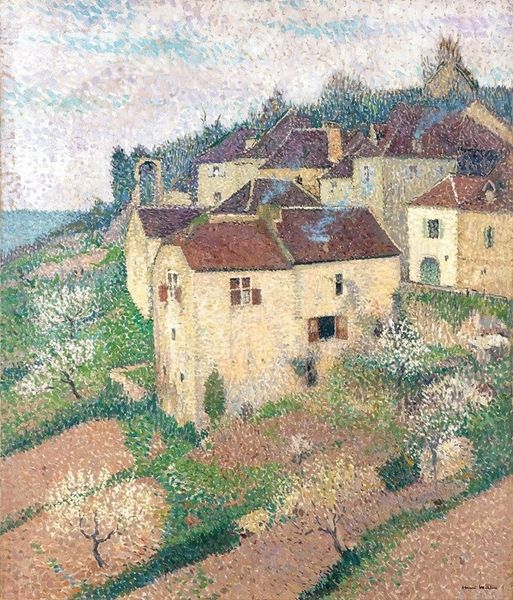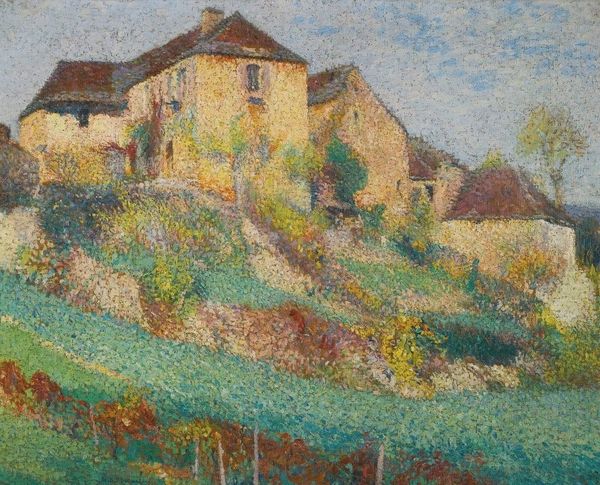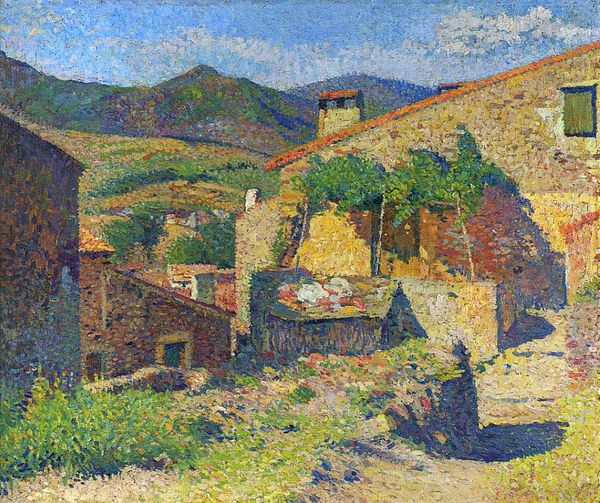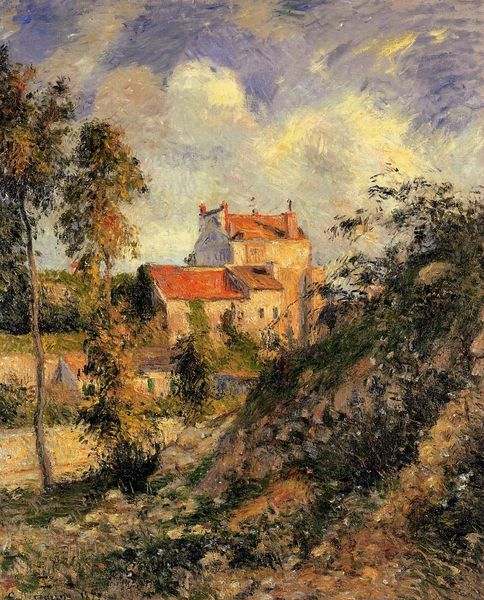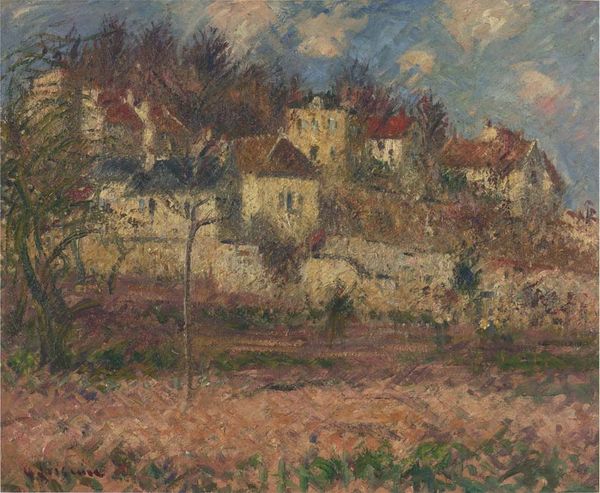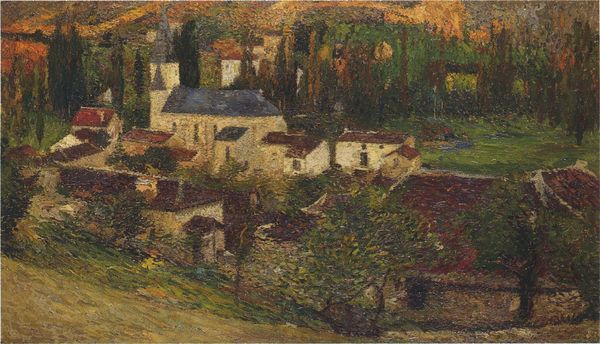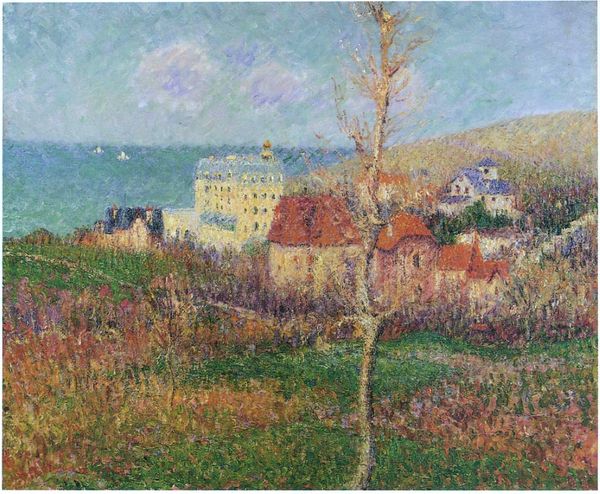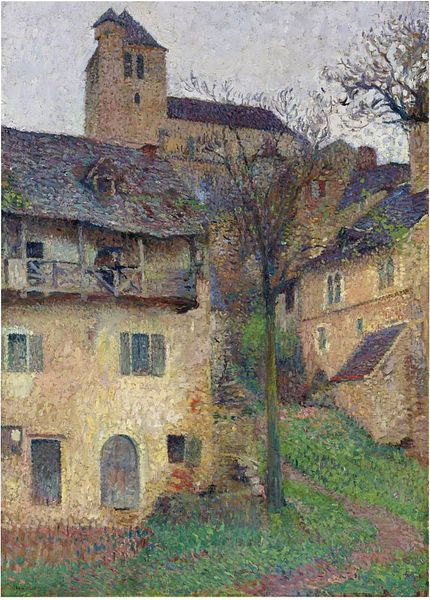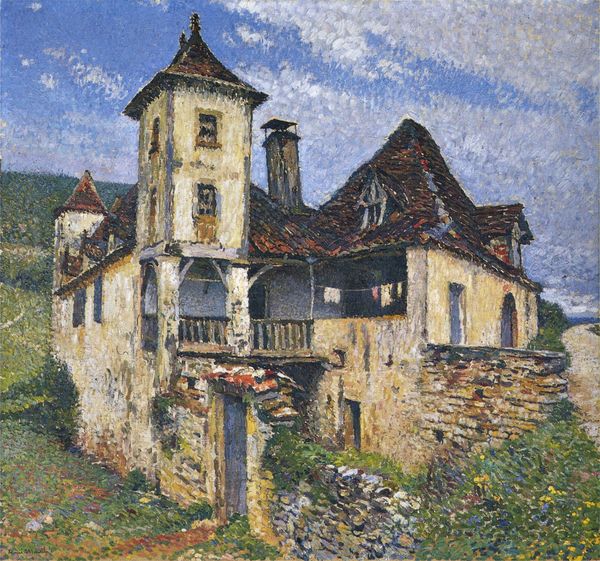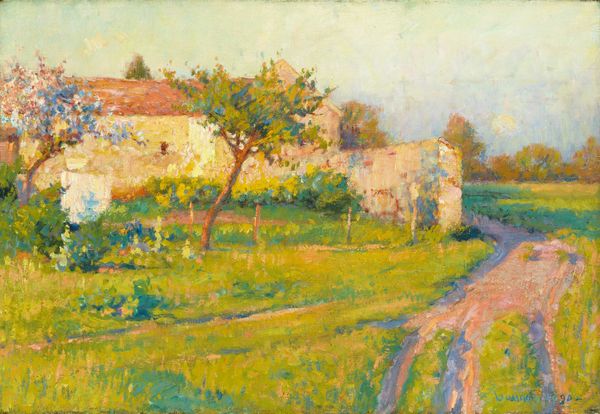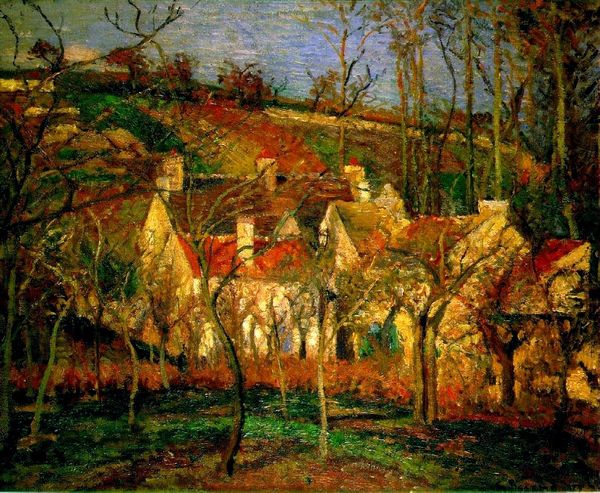
painting, oil-paint, impasto
#
painting
#
impressionism
#
oil-paint
#
landscape
#
house
#
impressionist landscape
#
oil painting
#
impasto
#
geometric
#
cityscape
#
post-impressionism
#
building
Copyright: Public domain
Editor: This is "Houses at Saint Cirq Lapopie" by Henri Martin, a beautiful oil painting. I'm really drawn to how he uses these tiny dots of paint. It’s like he’s building up the whole village with light and color. How would you interpret this work? Curator: Martin's post-impressionist style presents an interesting view on landscape painting. Look closely. How do these "dots" build up not only the landscape but also an idea of community and place in France at the turn of the century? The location itself, Saint Cirq Lapopie, was becoming increasingly romanticized as an "authentic" French village during a time of rapid industrialization and urbanization. Does this artwork perpetuate or challenge that romantic view? Editor: That's fascinating! I hadn't considered the village itself as part of the message. So the pointillist technique almost...idealizes it? Sanitizes it from the harsher realities? Curator: Exactly! The almost dreamlike quality smooths the edges off the lives that would have been lived there. Consider the patronage and exhibition history, how did it contribute to national identity, and what role did it play for both urban and rural viewers? Editor: It's really thought-provoking to consider how the style and subject connect to broader social currents. The romantic vision certainly does dominate at first glance, masking any difficult realities. Curator: And do you think that makes the art deceptive? Is it simply beautiful, or is it actively involved in shaping our understanding of French identity and rural life? These paintings become part of the grand narrative, the stories we tell ourselves about who we are as a society. Editor: It changes my perspective entirely! It makes me question my initial, purely aesthetic response, and think more critically about the artist's role and the painting's effect. Thank you!
Comments
No comments
Be the first to comment and join the conversation on the ultimate creative platform.
